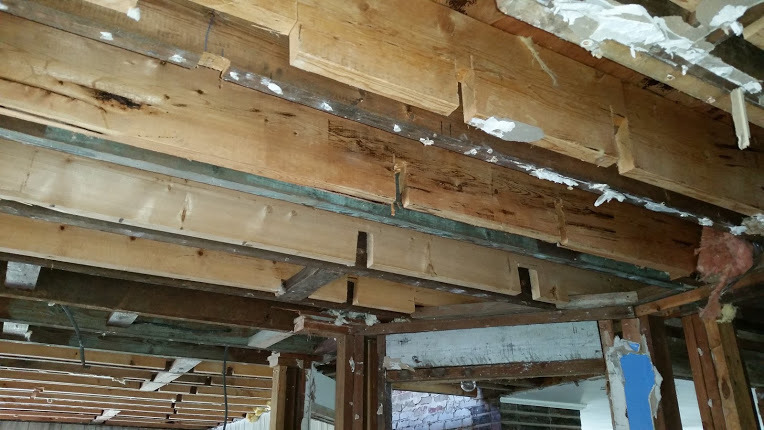dukeguy
Structural
- Apr 19, 2012
- 4
I attached a photo, for a situation I'm facing in trying to help a friend with some home renovations. For the record, I'm a structural engineer with a P.E. but I don't have a ton of wood experience beyond what was needed for the P.E. exam.
Basically, I was just curious if others on here would tackle this by designing a repair detail w/ plywood side plates (can only access the joists from one side... ) or is the notching so extensive you'd just recommend sistering with a brand new joist?
The reason there is only access from one side is due to the fact that there is another joist (8" deep) from when this was originally an attic rafter. Someone made the 2nd floor living space so they added new 10" deep joists (the badly notched ones in the photo). In some cases there is a gap between the two, otherwise my approach might have been just nailing the two joists together.

Basically, I was just curious if others on here would tackle this by designing a repair detail w/ plywood side plates (can only access the joists from one side... ) or is the notching so extensive you'd just recommend sistering with a brand new joist?
The reason there is only access from one side is due to the fact that there is another joist (8" deep) from when this was originally an attic rafter. Someone made the 2nd floor living space so they added new 10" deep joists (the badly notched ones in the photo). In some cases there is a gap between the two, otherwise my approach might have been just nailing the two joists together.



![[idea] [idea] [idea]](/data/assets/smilies/idea.gif)
![[r2d2] [r2d2] [r2d2]](/data/assets/smilies/r2d2.gif)